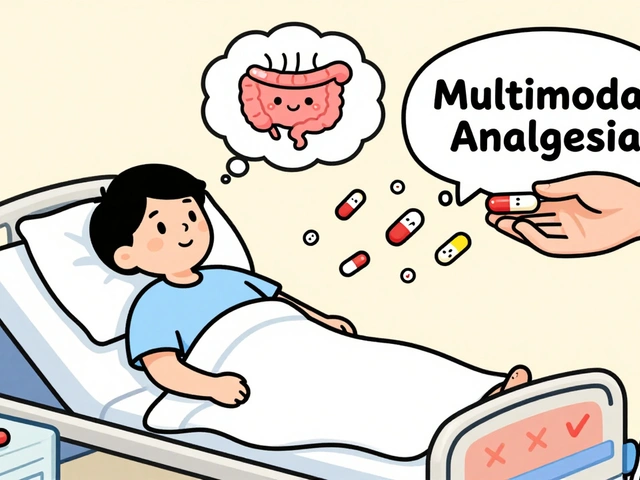Introduction to Shift-Work Disorder and Chronic Pain
As a blogger who is always interested in the effects of different lifestyles on our health, I recently came across a fascinating topic: the relationship between shift-work disorder and chronic pain. This issue affects many people around the world, especially those who work non-traditional hours, such as night shifts or rotating shifts. In this article, I will discuss the impact of shift-work disorder on chronic pain, and share some insights into how to manage these conditions to improve overall well-being.
The Science Behind Shift-Work Disorder
Before diving into the relationship between shift-work disorder and chronic pain, it's essential to understand what shift-work disorder is. Shift-work disorder is a sleep disorder that affects people who have irregular work schedules, such as night shifts, early morning shifts, or rotating shifts. This disorder is characterized by excessive sleepiness and difficulty falling asleep or staying asleep. It is believed to be caused by the misalignment of the body's natural circadian rhythm, which regulates sleep and wakefulness, with the individual's work schedule.
According to research, shift-work disorder can have various adverse effects on health, including increased risk of cardiovascular disease, diabetes, gastrointestinal problems, and mental health issues. Furthermore, it has been observed that people with shift-work disorder are more likely to experience chronic pain, which can have a significant impact on their quality of life.
Understanding Chronic Pain
Chronic pain is defined as pain that persists for more than three months, even after the initial cause of the pain has been treated or resolved. It can manifest in many forms, such as headaches, back pain, joint pain, or pain resulting from nerve damage. Chronic pain can have a profound effect on a person's life, leading to depression, anxiety, sleep disturbances, and reduced ability to work or partake in daily activities.
While the exact cause of chronic pain is not always clear, it is believed to involve a complex interplay of genetic, environmental, and psychological factors. In the context of shift-work disorder, the disruption of the body's natural sleep-wake cycle may play a crucial role in the development of chronic pain.
How Shift-Work Disorder Contributes to Chronic Pain
There are several ways in which shift-work disorder may contribute to the development or exacerbation of chronic pain. Firstly, the sleep disturbances associated with shift-work disorder can lead to increased fatigue, reduced pain tolerance, and heightened pain sensitivity. This can make existing pain feel more intense and may contribute to the development of new pain conditions.
Secondly, the disruption of the circadian rhythm can impact the production of various hormones and neurotransmitters involved in pain modulation, such as cortisol, melatonin, and endorphins. This imbalance can lead to an increased perception of pain and a reduced ability of the body to cope with it effectively.
Lastly, the overall impact of shift-work disorder on mental health can further contribute to chronic pain. Stress, anxiety, and depression are known to be closely linked with pain perception and can exacerbate existing pain conditions or contribute to the development of new ones.
Managing Shift-Work Disorder to Reduce Chronic Pain
For individuals experiencing chronic pain as a result of shift-work disorder, it is crucial to address both conditions to improve overall well-being. This may involve making changes to work schedules, seeking medical advice, and implementing sleep hygiene practices to improve sleep quality and restore the body's natural circadian rhythm.
In terms of pain management, a multidisciplinary approach is often most effective. This may include medication, physical therapy, psychological support, and complementary therapies, such as acupuncture or massage. It is essential to work with healthcare professionals to develop a personalized pain management plan that addresses the unique needs and circumstances of the individual.
Preventing Shift-Work Disorder and Chronic Pain
While it is not always possible to avoid shift work, there are steps that individuals can take to reduce their risk of developing shift-work disorder and associated chronic pain. These may include:
- Requesting a regular schedule with consistent hours, if possible
- Gradually adjusting to a new work schedule by making incremental changes to sleep and wake times
- Creating a sleep-friendly environment, including a dark, cool, and quiet bedroom
- Establishing a consistent bedtime routine and avoiding stimulating activities before sleep
- Limiting exposure to bright light during night shifts and using light therapy to help adjust the circadian rhythm
- Maintaining a healthy lifestyle, including regular exercise, a balanced diet, and stress reduction techniques
By taking these steps, individuals may be able to reduce their risk of developing shift-work disorder and associated chronic pain, and ultimately improve their overall health and well-being.
Conclusion
In conclusion, there is a clear relationship between shift-work disorder and chronic pain. By understanding this connection and taking steps to manage shift-work disorder and chronic pain effectively, individuals can improve their quality of life and overall well-being. It is crucial for those affected to seek the support of healthcare professionals and implement recommended strategies to address these complex and interconnected conditions.







May 6, 2023 AT 07:34
Shift work disrupts the natural sleep‑wake cycle and can lead to a cascade of health issues.
Researchers have shown that misalignment of circadian rhythms increases inflammation.
Inflammation is a known contributor to chronic pain conditions such as back pain and arthritis.
When the body cannot recover during sleep, pain thresholds tend to drop.
Workers on rotating schedules often experience reduced melatonin production.
Lower melatonin levels have been linked to heightened pain sensitivity.
Additionally, cortisol spikes caused by irregular sleep can amplify stress responses.
Stress hormones further sensitize nerve pathways, making pain feel more intense.
The combination of hormonal imbalance and sleep debt creates a perfect storm for chronic discomfort.
Practical steps include maintaining a consistent bedtime even on days off.
Using blackout curtains and limiting blue‑light exposure can support melatonin release.
Strategic light therapy during night shifts helps re‑entrain the internal clock.
Regular physical activity, especially low‑impact exercise, improves circulation and reduces stiffness.
Consulting a healthcare professional for personalized sleep hygiene plans is advisable.
By addressing both the circadian disruption and the resulting physiological changes, individuals can mitigate chronic pain over time.